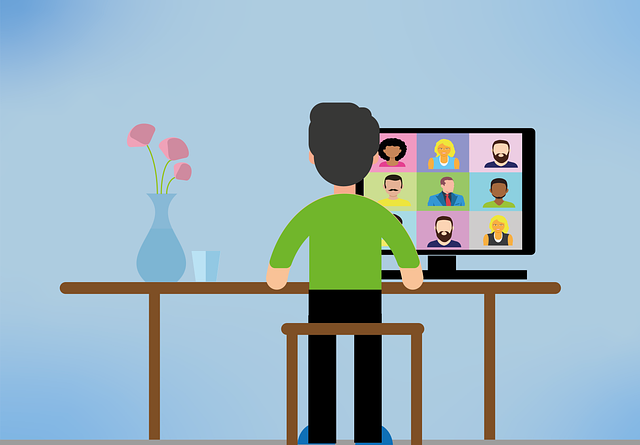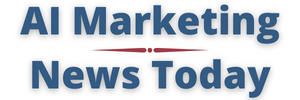
(Image by Alexandra_Koch from Pixabay )
Although Zoom was once just considered a reliable video communication platform for business and consumer users alike, following its rise in popularity during the COVID-19 pandemic, the leadership team at the vendor have pursued a strategy of consolidating more and more enterprise work into its platform. This was particularly evident following the launch of Zoom Workplace, which brought all of the company’s collaboration tools and features into one space – labelling it as the ‘place where people get work done’.
And this week Zoom has taken this further by introducing new workflow, automation and AI tools that aim to broaden its scope across the employee base, as well as for the IT department specifically. The product announcements should be viewed as both an attempt to bring more work into the fold, whilst also simultaneously opening up its platform to other enterprise vendors that have reach with enterprise buyers.
For instance, Zoom has this week announced the general availability of Workflow Automation, a no-code workflow builder – now with the added functionality of Zoom’s AI Companion.
Workflow Automation is aimed at both IT admins and end users, to set up steps and actions that will automatically run in a certain order once a trigger occurs. For instance, a trigger could be an AI Companion meeting summary generated after every meeting, which then is automatically added to a dedicated Zoom, Google or Word document. The workflow could then also have this document automatically shared in a Team Chat channel.
This example highlights how Zoom is encouraging work to be organized within its Workplace platform, by making it easier for users to automate simple tasks, whilst incorporating well-used collaboration tools from other vendors.
Wei Li, head of Team Chat at Zoom, said:
Empowering people with AI to help them get more done is core to what we do at Zoom. That’s why we’ve enabled Zoom Workflow Automation to harness the power of Zoom AI Companion.
Organizations can use Zoom Workflow Automation to set up workflows across Zoom Workplace and third-party apps, helping teams automate how they work. Workflow Automation not only takes repetitive tasks off of employees’ shoulders, it’s easy to use, even for teams who don’t have technical backgrounds.
Zoom is also targeting IT admins by allowing IT help desk requests to be collected with feedback collection forms, to allow employees to get the help they need when they need it. Additionally, the workflow automation platform combines conditional logic and sequential automation to build “dynamic workflows”, whilst integrating with their party applications, such as Google, Microsoft and Jira.
By using what Zoom calls ‘no-code’ technology and templates, it is hoping that it can accelerate the adoption of workflow builds – as the vendor claims that no technical background is required to get going with automating tasks.
Other examples of Zoom using workflow automation to extend into the remit of other enterprise players (such as ServiceNow and Workday), it also announced this week:
- A new chat-based form aimed at simplifying time-off request management, enabling quick request approvals and automatic notifications
- The ability to welcome a new Team Chat channel member with a templatized form to support the onboarding process
- Set recurring reminders for project status updates within a Team Chat channel or answer common questions with one click by assigning custom responses to emoji reactions.
- Create automated notifications and approval workflows in chat when a specific team member responds.
AI Companion
In addition to Workflow Automation, Zoom has also announced Workplace and AI Companion updates – aimed at making collaboration easier before, during and after meetings. The new features include:
- New Zoom Clips avatars with AI Companion. Users can generate a Clip by selecting from a library of 18 pre-generated avatars and adding a script. Using a template avatar for a Clip removes the need to re-record a video multiple times and aims to reduce unnecessary meetings,
- Collect data with Forms in Zoom Docs. Users can now create and distribute forms in Zoom Docs to gather information from others within their organization or externally. The data table sub-row enables nested items within a table to be created under parent headings for management and project tracking. Additionally, users can now create charts in Zoom Docs using data tables with the dashboard feature, as well as use synced data tables to keep data tables updated across different Docs reflecting changes made in synced tables in real time, even from another Doc.
- The YouTube app for Zoom Meetings is coming soon, which will allow users to search and watch YouTube videos during a Zoom Meeting.
- To facilitate seamless multilingual connection, Zoom Meetings now provides enhanced caption services in Portuguese, with Welsh coming soon, and transcription of Hebrew recordings coming soon as well.
- The Zoom AI Companion side panel is now available in more languages. Users can now interact with AI Companion in Chinese (Traditional and Simplified), French, German, Japanese, Portuguese, Spanish, Italian, Korean, Indonesian, Polish, Russian, Swedish, Turkish, Vietnamese, and Dutch (Netherlands).
My take
Zoom’s earnings are out next week, so we will be keeping an eye on how the company’s Workplace strategy is resonating with the market. The reality for many enterprises is that they are embedded with legacy providers, which now offer extensive collaboration tools (e.g. Microsoft). However, if Zoom can offer the ability to automate more work by using its video platform as a jumping off point, whilst integrating with other platforms, there’s potential it can creep and expand its reach with users. And it’s the users who will likely have some sway over how and where they like to get work done. Zoom is slowly but surely increasing the reach of what it does, well beyond video conferencing. Whether it can make a material impact on other vendors, remains to be seen – but certainly an interesting play being made.







